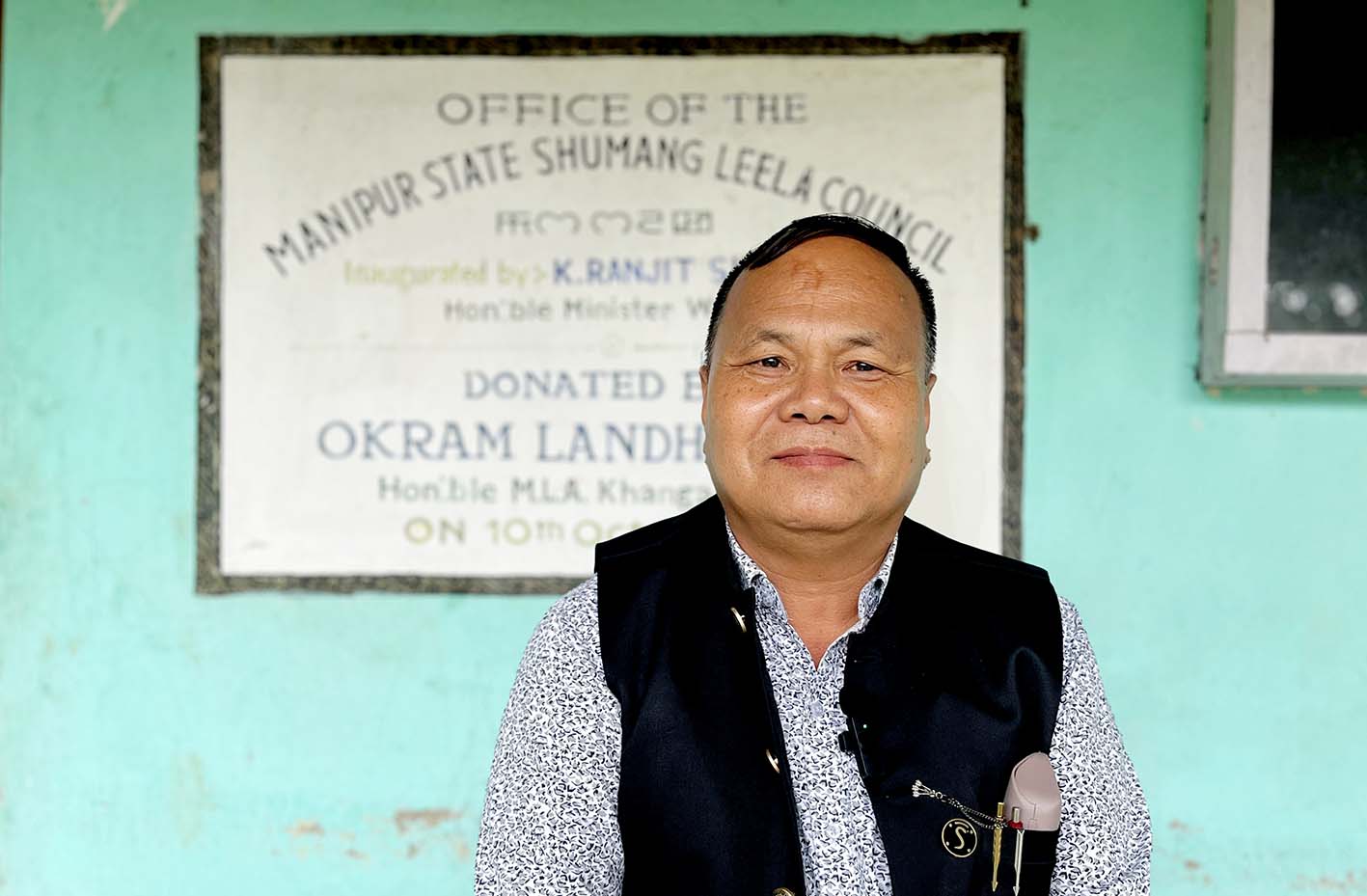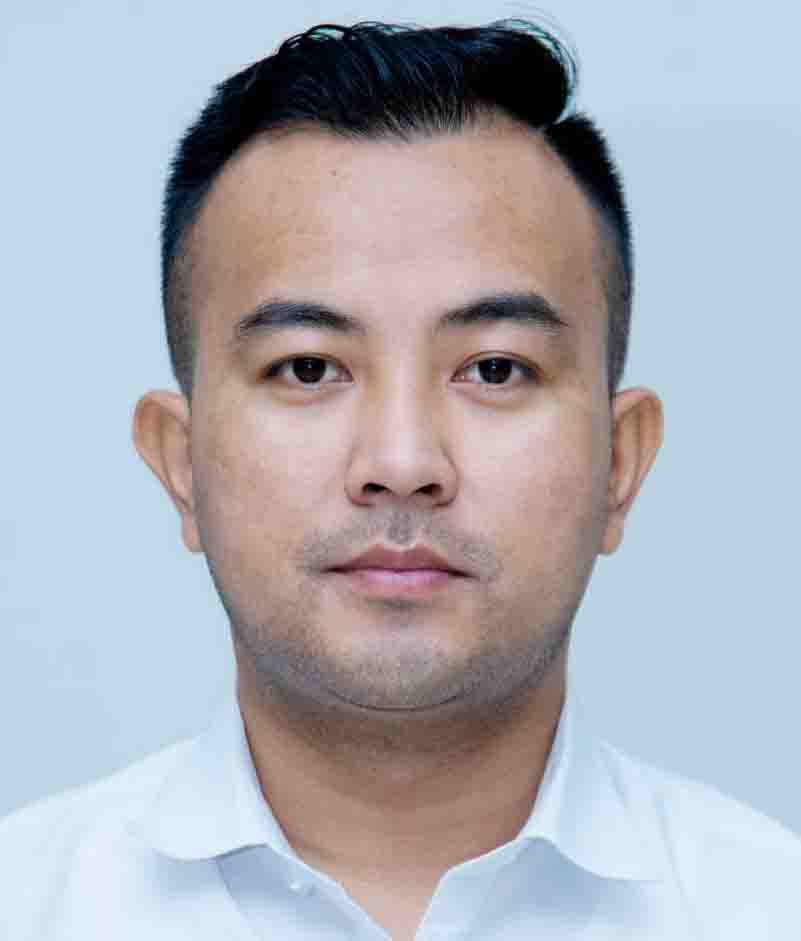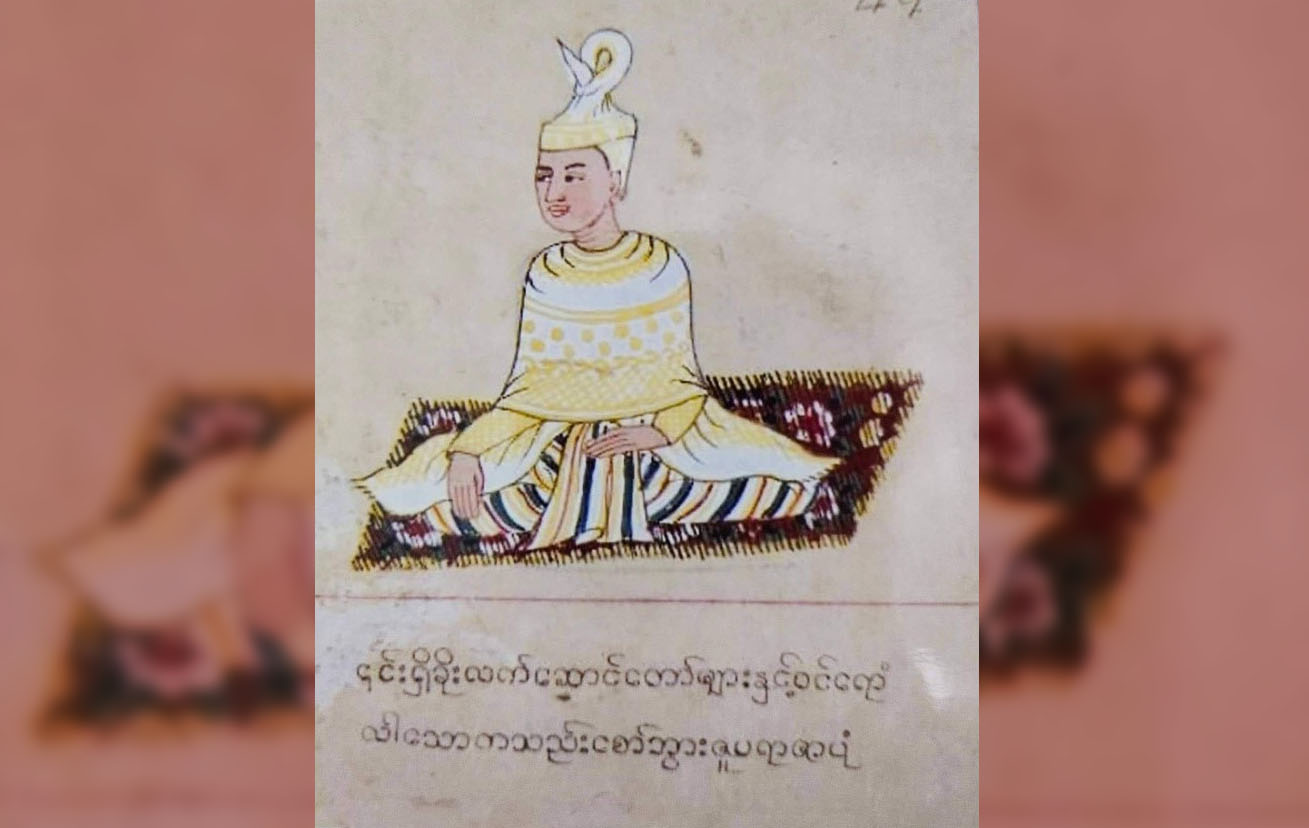For over fifteen harrowing months, Manipur has been ensnared in the clutches of relentless violence, a crisis of unprecedented magnitude in the state’s history. The State Government’s woeful failure to contain the turmoil has cast the people into a dystopian reality that seems without parallel in the annals of democracy. The ethnic strife between two communities has wrought devastation across all strata of society, with the realm of art and entertainment suffering particularly grievously. Despite their role in exposing governmental failures and nurturing cultural understanding, artistic endeavors are often dismissed as mere diversions. In Manipur, where cinema and Shumang Leela theatre have long served as powerful critiques of political corruption and societal issues, the current crisis has rendered these artistic efforts both poignant and overshadowed. Among the most prominent figures is Sougrakpam Hemanta, affectionately known as Oja Tolhan in the entertainment world. As a celebrated comedian and actor, his career in Manipuri cinema and Shumang Leela has been distinguished by performances that both satirize governance and shed light on social realities.
In the last few months, clips from his 1993 film Mantri Dolansana, in which he portrayed a comically inept politician, have resurfaced amid the ongoing conflict. The public’s circulation of these clips underscores a striking parallel between his role and the current political landscape—leaders who, much like his character, appear more like jesters making empty promises and taking no substantial action to resolve the violence plaguing Manipur.
In an illuminating interview with the Imphal Review of Arts and Politics (IRAP), Hemanta, who serves as the Lifetime Secretary of the Manipur State Shumang Leela Council, highlighted the profound impact of the violence that erupted on May 3, 2023, on the artistic community. He emphasized that the ongoing unrest has not only intensified the disruption of artistic and cultural activities but also contributed to the violence itself. According to Hemanta, the halt in Shumang Leela performances —a key medium for imparting cultural values and critiquing societal issues—has deprived the community of a vital channel for constructive engagement. He argues that both the recent disruption and the earlier one caused by COVID-19 have exacerbated the conflict. The absence of cultural expression and critique during these periods has created a void, which has, in part, fueled the unrest.
Excerpts from the Interview:
Imphal Review of Arts and Politics (IRAP): As the violence in Manipur has now persisted for 15 months, it was evident in the early stages that the Shumang Leela performances were significantly impacted. Given that the situation has continued for over fifteen months, do you anticipate any changes in the near future that would allow Shumang Leela performances to resume?
Sougrakpam Hemanta: For Shumang Leela artists, the impetus to perform transcends mere financial imperatives; it is an intrinsic element of our very essence, deeply ingrained in our identities. This art form is not merely a livelihood but a profound passion that courses through our veins, shaping the very fabric of our existence. Reflecting on my personal odyssey, I can attest to the indelible presence of Shumang Leela throughout my life. From my early days as a fledgling performer, clad in shorts, to my progression into adulthood and maturity as an artist, this journey parallels the natural evolution we undergo as individuals, with the art form serving as both a guide and a reflection of our personal growth. Shumang Leela is far more than a profession; it constitutes a way of life. Our performances are not motivated solely by financial gain, but by an intrinsic compulsion to express our innermost selves and forge a connection with our audiences. Our dedication to this art is so profound that even in the face of external adversities, such as the current unrest, our passion remains undiminished. We are driven by an unyielding desire to return to the stage, to once again immerse ourselves in the performances to which we have devoted our lives.
We eagerly await the cessation of violence and disruptions that have kept us from performing, yearning for the moment when we can once again share our artistry with the world. To live and breathe Shumang Leela every day is not merely a goal but the very sustenance of our souls.
IRAP: There have been reports that male actors who traditionally take on female roles in Shumang Leela grow beards due to prolonged breaks in their performances. What is the current situation, and how are you preparing for it?
Sougrakpam Hemanta: Our actors, who traditionally assume female roles in Shumang Leela, have recently shaved their beards—a symbolic gesture brimming with hope, signaling their anticipation of a resurgence in the performing arts as the cultural landscape begins to heal. While other art forms like singing and cinema have already resumed, albeit in a subdued manner, they hint at the early stages of a revival in our performance culture. Those Shumang Leela actors who had been diverted by other pursuits, driven by past conflicts, are now redirecting their energies toward refining their craft, with a renewed focus on Shumang Leela. As conditions gradually improve, we eagerly anticipate the Shumang Leela festival. Our dedication to this art form remains steadfast, and we are fully committed to orchestrating a spectacular return to the stage, heralding a triumphant revival of our cultural heritage.
IRAP: What are your expectations for Shumang Leela at this time? Have conditions improved to the point where performances can be held in specific locations? Is there noticeable public support for resuming these performances soon?
Sougrakpam Hemanta: At present, it appears unlikely that we will be able to hold Shumang Leela performances in local neighborhoods or peripheral areas. The public also seems to have low expectations for such events in these locations under the current circumstances. However, to ensure that Shumang Leela’s impact does not diminish and to provide some solace to those enduring difficult times, there is increasing advocacy from both the public and Civil Society Organizations. They are encouraging us to perform in designated spaces, such as Shumang Leela Shanglen or community halls in various localities and district centers. We have received the green light for these proposed venues.
Given the current situation, openly performing in public parks is not considered appropriate. Instead, we are exploring the possibility of hosting Shumang Leela shows at Iboyaima Shumang Leela Shanglen. This would involve various groups taking turns to perform on a rotating basis. This arrangement aims to serve both the public and the artists, who have been significantly affected by the lack of work and income. We are concerned about the mental health of our artists, as the absence of opportunities to utilize their skills can lead to psychological distress. To address this, we are proactively preparing by conducting workshops for current and aspiring young artists. These workshops focus on education and training, ensuring that artists remain engaged, continue to practice, and are well-prepared for future performances.
IRAP: Given the severe impact of the current violence on Shumang Leela performances and the resulting financial difficulties faced by artists, has there been any government intervention or support to help them during this challenging time?
Sougrakpam Hemanta: Given the current situation, we have been reaching out to various government departments for support. However, without public endorsement and engagement, it will be challenging to make any government-organized initiatives effective. Producing a Shumang Leela for a specific occasion is a significant task, and public interest is crucial for its success. I’ve been advocating for the government to provide us with opportunities to perform Shumang Leela that raise awareness on important issues, such as AIDS control or other government initiatives. Performing in relief camps and other secure locations could be a viable way to both engage the public and contribute to these causes.
Producing a Shumang Leela is costly, and our understanding of these expenses has evolved over time. Previously, we assumed that Shumang Leela production was relatively inexpensive because we had good income from performances. However, with the loss of income due to the COVID-19 pandemic and the current conflict, it has become evident that sustaining Shumang Leela is more challenging than we realized. While initiatives like the Chief Ministergi Artiste Sing Gi Tengbang (CMAT) have provided some assistance, it has only covered about 25 percent of our needs. The remaining 75 percent still requires substantial support. The combination of the pandemic and ongoing conflict has significantly impacted our financial stability and our ability to continue producing Shumang Leela.
IRAP: What specific support do Shumang Leela artists and groups hope to receive from the government or the public to help revive and restore performances to their previous level once normalcy returns to Manipur?
Sougrakpam Hemanta: To effectively revive Shumang Leela to its former prominence, the government must step in with financial support. Specifically, we need grants for the leading Shumang Leela groups to produce new performances. The production of a new Leela is quite costly, with expenses reaching up to 15 lakhs rupees. If the government could provide around 10 lakhs in grants to each Leela party, it would greatly facilitate the creation and preparation of new material. Without new performances, even if a Shumang Leela Festival is organized, we would face significant challenges. We wouldn’t be able to showcase fresh Leela to the public, which would limit our participation in such events. The current situation has already severely impacted our ability to perform, and the absence of new content would further hinder our engagement in festivals. If the situation improves and normalcy returns, we are fully committed to resuming performances across various locations. However, if the violence were to end tomorrow, our readiness to perform would still be limited by the lack of new Leela. Financial assistance from the government is essential for producing new works, and the support we receive now will determine the future trajectory of Shumang Leela. The coming months are crucial, as they will shape the ability of Shumang Leela to recover and thrive once again.
IRAP: What is the direct impact of the ongoing violence in Manipur on artists? Have there been instances where artists have had to abandon their craft due to lack of income and shift to other trades or jobs to support themselves?
Sougrakpam Hemanta: The ramifications of this crisis have profoundly impacted the majority of artists. Out of the eighteen Shumang Leela groups, three have already disbanded. Numerous artists have been compelled to undertake manual labor, with some relegated to working in brick fields, while others have transitioned to electronic media as a means of subsistence. Regrettably, I fear that many of these artists may never return to their craft. In response, we have initiated workshops at the Iboyaima Shumang Leela Shanglen to cultivate new talent. Through these workshops, we meticulously select promising individuals to fill the void left by those who have departed the field. It is, in essence, a recruitment process designed to preserve and perpetuate the art form.
IRAP: Shumang Leela and cinema both play a crucial role in preserving culture and traditions, as well as raising awareness about various issues. However, some people seem to see these forms of expression as mere entertainment. What are your thoughts on this perspective?
Sougrakpam Hemanta: I contend that the ongoing violence, which erupted on May 3, 2023, can be attributed, in part, to the protracted disruption of artistic and cultural activities. The COVID-19 pandemic imposed a two-year hiatus, and now this unrest has prolonged the interruption by another year. For three years, we have been deprived of vital cultural expressions—no Shumang Leela Festival, no Sangai Festival. The absence of these cultural events is a harbinger of societal disarray. When art and entertainment, which are indispensable for the transmission of culture and tradition, are suspended, it appears we have inadvertently cultivated an environment rife with discord, animosity, and belligerence.
Since the onset of this violence, we have observed a troubling escalation in discourse and behaviour that are bereft of cultural refinement. I assert that this is a consequence of the prolonged absence of cultural activities since the pandemic. The brutal manner in which individuals are now attacking and disparaging each other, often resorting to vulgarity, is indicative of this cultural erosion. Even those who once took pride in their cultural heritage have begun to respond in kind, as though they have become estranged from their own traditions. The cessation of cultural expression, exacerbated by the pandemic, has precipitated a deterioration in our cultural fabric.
Shumang Leela and other forms of artistic expression are not merely entertainment; they are essential cultural practices. The cessation of these activities precipitates the erosion of our cultural identity. These performances, such as Shumang Leela, are vital embodiments of our culture. To mitigate the violence, we must resuscitate cultural practices that advocate for unity and peace. We must convey that violence is futile, and only through integration and mutual affection can we flourish. Through the revival of cultural practices, we can effectively disseminate the message of peace.












